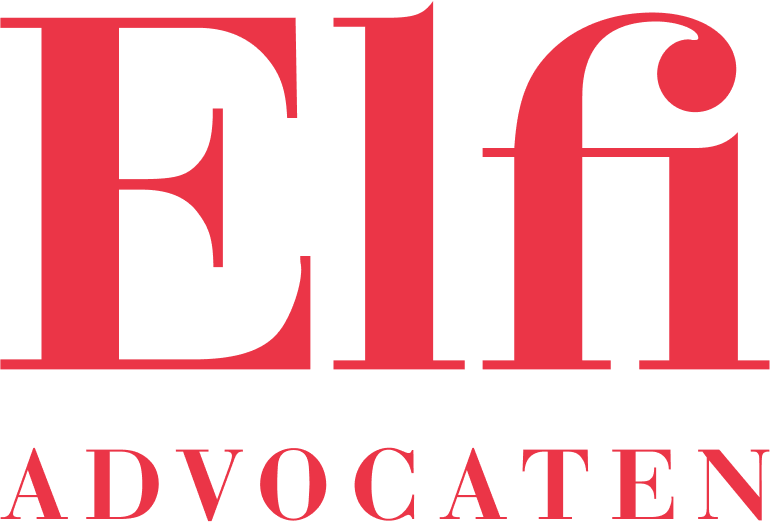Mr Nejla Ugur joined ELFI Letselschade in Rotterdam in 2019. She originally studied law at the Free University in Amsterdam. In March 2019, she made the switch to the legal profession. Nejla has written a blog on the increased fraud in the personal injury industry.
After her studies, Nejla worked for more than five years as a professional technical advisor and civil lawyer SME at the tax authorities, where she was able to specialise in the fields of attachment and enforcement law, civil (procedural) law, tax recovery law and liability law, among others.
Nejla has been able to use her acquired knowledge and experience to assist both individuals and entrepreneurs in liability law and employment law, among others.
BLOG
Fraud is receiving increasing attention in personal injury practice. Various studies have shown that fraud cases in personal injury cases have increased in recent years. It remains a difficult and sensitive issue, especially in personal injury cases where the vast majority of victims have actually suffered personal injury as a result of a wrongful act (e.g. an industrial accident or a traffic accident). So how is fraud assessed?
This is often not clear in personal injury cases. Consider, for example, pain that is very subjective and sometimes not measurable, the so-called hard-to-objectify injuries. Both the advocate, the medical specialists and the insurer depend in such cases on the information provided by the injured party about his pain symptoms.
Injured party
The moment an injury is caused by an insured person, the insurer concerned has to deal with a third party, namely the injured party/victim (hereinafter: injured party). Despite there being no contractual relationship between the injured party and the insurer, the injured party can claim his damages directly from the insurer. He can do so under Section 7:954 of the Civil Code or, in the case of a traffic accident, under Section 6 of the Motor Insurance Liability Act.
After the insurer acknowledges liability, the injured party’s damages must be mapped out so that they can eventually be translated into a monetary amount. Most of the information about the damage comes from the injured party. In this context, the injured party has to provide a lot of information about himself, his private life, work and income to the insurer.
Suspected fraud
What actually qualifies as fraud? The Personal Inquiry Code of Conduct ‘drawn up by the Association of Insurers’ defines fraud as follows[1]:
“Deliberately misleading an insurer in the conclusion and/or performance of an insurance contract with the intention of unlawfully obtaining insurance cover, benefit, performance or service.”
The insurer may initiate a fact-finding and then a personal investigation if it has doubts about the reliability of the information provided by the injured party, or if inconsistencies are found.
Personal investigation
Under Article 1. of the Personal Investigation Code of Conduct, a personal investigation can be initiated after:
” Reasonable doubt has arisen about the accuracy or completeness of the results of the fact-finding, such that a reasonable suspicion of insurance fraud or other forms of improper use of insurance products or services has arisen at the insurer. ”
A personal investigation may include obtaining information from third parties, interviewing the injured party, and observing the injured party, which may involve the use of a camera[2]. In short, the injured party can be shadowed and filmed by this intrusive means.
Besides, it is more than logical that when fraud is suspected, the insurer needs more information to assess the injured party’s damages. But to what extent does this relate to the injured party’s right to privacy? It is well established that a personal investigation is an intrusive tool and therefore provides an invasion of the injured party’s privacy[3].
The Supreme Court has held the following in this regard:
” The institution by an insurer of a personal investigation such as the one at issue here constitutes an infringement of the insured’s right to respect for his privacy. Such an infringement is in principle unlawful. The presence of a ground of justification may deprive an infringement of its unlawful character.” [4]
In short, the Supreme Court has ruled that a breach of privacy is in principle unlawful unless there is a justification for that breach.
According to the Supreme Court, whether a ground of justification exists can be assessed on the basis of the circumstances of the case. On this, the Supreme Court said the following:
” Whether such a ground of justification arises can only be assessed in the light of the circumstances of the case by weighing up, on the one hand, the seriousness of the infringement of the right to respect for personal privacy and, on the other hand, the interests that can reasonably be served by the infringing acts (cf. HR 31 May 2002, ECLI:NL:HR:2002:AD9609, NJ 2003/589).”[5]
There is no doubt that the insurer often logically has an interest in such an investigation, as the burden of proof of fraud is on the insurer. The Code of Conduct for Personal Investigations sets out the rules the insurer must observe when conducting a personal investigation. The principles of proportionality and subsidiarity play an important role here.[6]
In this context, the Supreme Court has ruled as follows:
” In the case at issue here, it is a matter of balancing the insured’s interest in respecting his privacy against the insurer’s interest in identifying, preventing, investigating and combating improper use of the right to an insurance benefit (cf. the Code of Conduct, Introduction). With the Code of Conduct, the Insurers’ Association intended to give substance to the aforementioned balancing of interests, also for the benefit of the insured, in particular by including the obligation for insurers to observe the principles of proportionality and subsidiarity. According to the introduction, the Code of Conduct aims to tie in with existing privacy legislation, such as the Personal Data Protection Act and legislation on the (covert) use of cameras.
Given the content and intent of the Code of Conduct, it can be taken as a starting point that if an insurer acts in violation of the code, there is an unjustified and therefore unlawful invasion of the privacy of the insured.”
Thus, if it is established that the insurer acted in violation of the principle of proportionality or subsidiarity, it means that the invasion of privacy is unlawful.[7]
In short, the proportionality principle requires the insurer to weigh up interests before conducting a personal investigation. In doing so, the invasion of the injured party’s privacy must not be disproportionate in relation to the purpose of the intended processing of personal data.
Furthermore, on the basis of the subsidiarity principle, the insurer must assess whether the purpose of the personal investigation (and the special investigation methods and means to be used in the process) cannot reasonably be achieved in another way that is less detrimental to the data subject.
When is the insurer allowed to conduct a personal investigation?
In the Supreme Court’s view, before resorting to this remedy, the following should be established:
” With its considerations that it must be established that the insured ‘structurally refuses’ to cooperate (para 6) and that (in the context of the question of whether there is a reasonable suspicion of fraud) there must be an insured who ‘thoroughly and/or structurally deceives or has deceived’ the insurer in handling the claim (para. 9), the court expressed that only if the conclusion is justified that asking for (further) cooperation from the insured himself makes no sense, may the much heavier means of a personal investigation be deployed. This explanation is not incomprehensible.”
As indicated earlier, a personal investigation infringes on privacy unless there is a justification for it. According to the Supreme Court, whether a ground of justification exists can be judged on the basis of the circumstances of the case, whereby the seriousness of the infringement on the one hand and the interests of the insurer involved on the other must be weighed against each other.[8] The Insurers’ Association has given shape to this weighing of interests in the aforementioned principles. Furthermore, the Supreme Court has assessed when observation is allowed. Thereby, the pattern of behaviour of the injured party is very relevant.
In my next blog, I will further discuss the consequences of an infringement of the right to privacy in the absence of a justification. And in particular what this means for the evidence gathered by the insurer.
[1] The Code of Conduct on Personal Investigation is available at www.verzekeraars.nl
[2] See p. 3 Code of Conduct Personal Investigation. See also M.M.R. van Ardenne-Dick, Privacy and the effect of personal investigation in case law, The Insurance Archive 2014, vol. 2, pp. 79-89.
[3] Art. 10 of the Constitution, Art. 8 of the European Convention for the Protection of Human Rights and Fundamental Freedoms, Art. 7 of the Charter of Fundamental Rights of the European Union and Art. 17 of the International Covenant on Civil and Political Rights.
[4] HR 31 May 2002, NJ 2003/589 cf. Vranken; HR 18 April 2014, NJ 2015/20 cf. M.M. Mendel and H.B. Krans (Achmea/Rijnberg).
[5] HR 18 April 2012, ECLI:NL:HR:2014:942/ NJ 2015/20
[6] Arts 2 and 3 of the Code of Conduct for Personal Investigation.
[7] HR 18 April 2014, NJ 2015/20 cf. M.M. Mendel and H.B. Krans (Achmea/Rijnberg).
[8] HR 31 May 2002, NJ 2003/589 cf. Vranken; HR 18 April 2014, NJ 2015/20 m.nt. M.M. Mendel and H.B. Krans (Achmea/Rijnberg).
Posted on 05-01-2021



